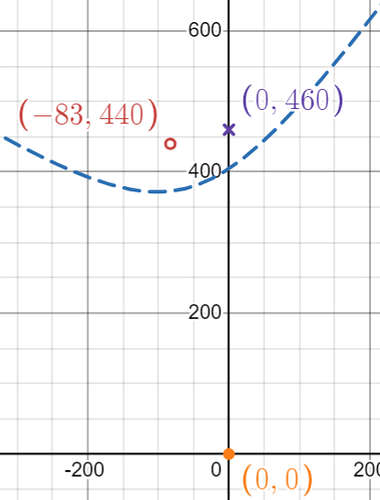Sorry to be repetitive but I put this in the thread that was shut down.
I did some math to generate the locus of points where an unknown sound could be coming from if you have:
- one sound of known location
- one sound of unknown location
- two microphones both stationary and of known location
And the only data needed is just the time difference between the two sounds as measured by different mics. Just the exact time of each report. No click-boom or echoes needed.
At the Desmos link I have one mic fixed at the podium (but would be easy to change), the position of the other mic can be moved. And the difference of the two time differences can be dialed in. You get a dashed line: the unknown sound could be anywhere along that line. More mics = triangulation.
It should be possible to locate 123 vs 45678 vs 9 vs 10 if there are several recordings from known locations.
